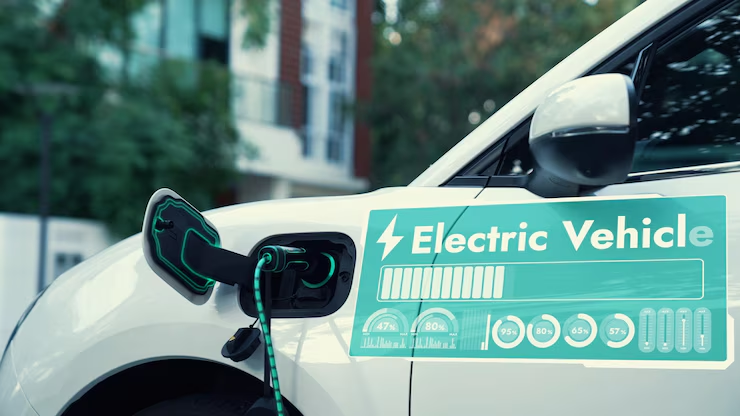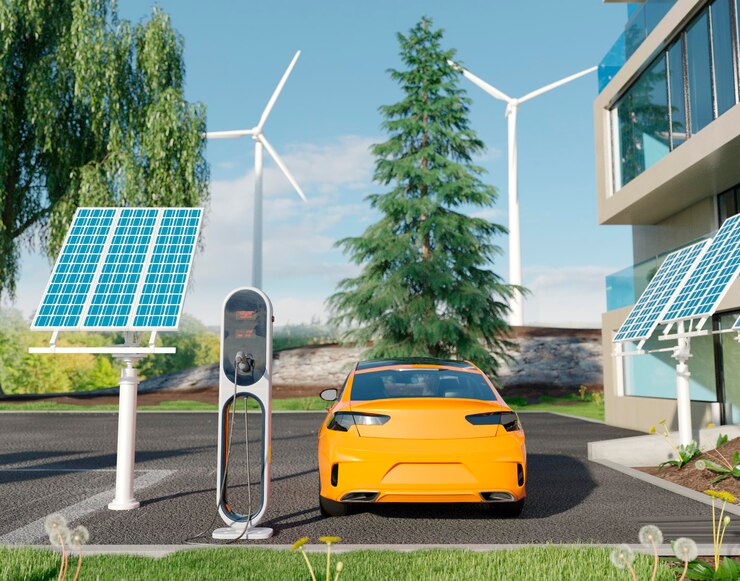
Electric vehicles (EVs) are automobiles that use electric motors powered by batteries instead of internal combustion engines fueled by gasoline or diesel. EVs have gained significant attention in recent years due to their potential to reduce greenhouse gas emissions, lower operating costs, and provide a more sustainable alternative to traditional vehicles.
Key Types of Electric Vehicles
- Battery Electric Vehicles (BEVs) BEVs are powered exclusively by electric batteries and do not have a gasoline engine. They rely on electric motors and require charging from an external power source.
- Advantages: BEVs offer zero tailpipe emissions, lower operating costs, and quieter operation compared to traditional vehicles. They also benefit from advancements in battery technology that extend driving range and reduce charging times.
- Examples: Popular BEVs include the Tesla Model 3, Nissan Leaf, and Chevrolet Bolt EV.
- Plug-in Hybrid Electric Vehicles (PHEVs) PHEVs combine an electric motor with a gasoline engine. They can operate on electric power alone for shorter distances and switch to gasoline for longer trips.
- Advantages: PHEVs provide flexibility with both electric and gasoline power, reducing range anxiety and extending driving range. They can be charged from an external power source and typically offer better fuel efficiency than conventional hybrids.
- Examples: Notable PHEVs include the Toyota Prius Prime, Ford Escape Plug-In Hybrid, and Mitsubishi Outlander PHEV.
- Hybrid Electric Vehicles (HEVs) HEVs use both an internal combustion engine and an electric motor, but they cannot be plugged in to charge. The battery is charged through regenerative braking and the internal combustion engine.
- Advantages: HEVs offer improved fuel efficiency and reduced emissions compared to conventional vehicles. They do not require external charging and are a more accessible option for those who are not ready to fully commit to an electric vehicle.
- Examples: Popular HEVs include the Toyota Prius, Honda Insight, and Ford Fusion Hybrid.
Benefits of Electric Vehicles
- Environmental Impact Electric vehicles contribute to reducing greenhouse gas emissions and air pollution. By operating on electric power, BEVs produce zero tailpipe emissions, which helps decrease the overall carbon footprint and improve air quality.
- Reduction in Greenhouse Gases: EVs help lower carbon dioxide (CO2) emissions, particularly when charged from renewable energy sources such as wind or solar power.
- Improved Air Quality: Reducing tailpipe emissions decreases pollutants such as nitrogen oxides (NOx) and particulate matter, which can improve public health and environmental conditions.
- Cost Savings Electric vehicles offer several cost-saving benefits, including lower fuel costs and reduced maintenance expenses.
- Lower Fuel Costs: Charging an EV is generally cheaper than refueling a gasoline vehicle. The cost per mile for electricity is often significantly lower than the cost per mile for gasoline.
- Reduced Maintenance: EVs have fewer moving parts compared to internal combustion engine vehicles, leading to lower maintenance costs. They do not require oil changes, and brake systems often experience less wear due to regenerative braking.
- Energy Efficiency Electric vehicles are more energy-efficient than traditional vehicles, converting a higher percentage of energy from the battery to power the wheels.
- Efficient Power Conversion: Electric motors are inherently more efficient at converting energy into motion, which results in better energy utilization and overall performance.
- Regenerative Braking: EVs use regenerative braking to capture and reuse energy that would otherwise be lost during braking, further improving energy efficiency.
Challenges Facing Electric Vehicles
- Charging Infrastructure The availability and accessibility of charging infrastructure are critical factors influencing the adoption of electric vehicles.
- Charging Stations: The distribution of public charging stations is uneven, with urban areas often having better coverage than rural or remote locations. Expanding the charging network is essential for supporting widespread EV adoption.
- Charging Speed: Charging times for electric vehicles can vary, with fast chargers reducing charging times significantly but being less common than standard chargers. Improving charging speed and infrastructure is crucial for enhancing the convenience of EV ownership.
- Battery Technology and Range Battery technology plays a significant role in the performance and range of electric vehicles. Advances in battery technology are needed to address current limitations.
- Battery Range: While advancements have improved the driving range of EVs, range anxiety remains a concern for many potential buyers. Increasing battery capacity and efficiency is essential for alleviating range anxiety.
- Battery Life and Cost: Battery lifespan and replacement costs can impact the overall cost of owning an EV. Ongoing research and development aim to improve battery longevity and reduce costs.
- Initial Purchase Price The upfront cost of electric vehicles can be higher compared to conventional vehicles, primarily due to the cost of battery technology.
- Purchase Incentives: Government incentives, such as tax credits and rebates, can help offset the higher initial cost of EVs. However, the availability and amount of incentives can vary by region.
- Cost Parity: As battery technology advances and production scales up, the cost of EVs is expected to decrease, making them more affordable for a broader range of consumers.
The Future of Electric Vehicles

- Technological Advancements Ongoing research and development in battery technology, charging infrastructure, and electric drivetrains will drive the future of electric vehicles.
- Solid-State Batteries: Emerging solid-state battery technology promises higher energy density, faster charging times, and improved safety compared to current lithium-ion batteries.
- Autonomous Driving: Integration of autonomous driving technology with electric vehicles has the potential to enhance safety, convenience, and efficiency in transportation.
- Market Growth and Adoption The electric vehicle market is expected to grow rapidly as technology improves and consumer demand increases.
- Increased Model Availability: As more automakers enter the EV market, the variety of electric vehicle models and options will expand, catering to different consumer needs and preferences.
- Global Adoption: Governments around the world are implementing policies and incentives to promote the adoption of electric vehicles, supporting the transition to cleaner transportation.
- Sustainability and Environmental Goals Electric vehicles play a crucial role in achieving sustainability and environmental goals, including reducing greenhouse gas emissions and transitioning to renewable energy sources.
- Renewable Energy Integration: Pairing electric vehicles with renewable energy sources, such as solar or wind power, can further reduce the environmental impact and promote a sustainable energy ecosystem.
- Circular Economy: Developing recycling and reuse programs for EV batteries and components supports a circular economy and minimizes waste.
Conclusion
Electric vehicles are revolutionizing the transportation industry by offering a cleaner, more efficient alternative to traditional vehicles. The benefits of electric vehicles, including reduced emissions, cost savings, and energy efficiency, make them a compelling choice for environmentally conscious consumers. However, challenges such as charging infrastructure, battery technology, and initial purchase price must be addressed to facilitate widespread adoption. As technology continues to advance and market conditions evolve, electric vehicles will play an increasingly important role in shaping the future of transportation and achieving sustainability goals.

[…] Your credit score plays a significant role in the loan application process. Lenders use your credit score to assess your creditworthiness and determine the interest rate and terms of the loan. Obtain a copy of your credit report and address any issues before applying. […]